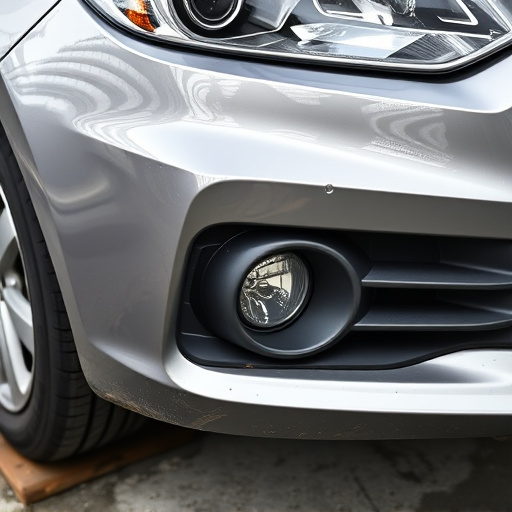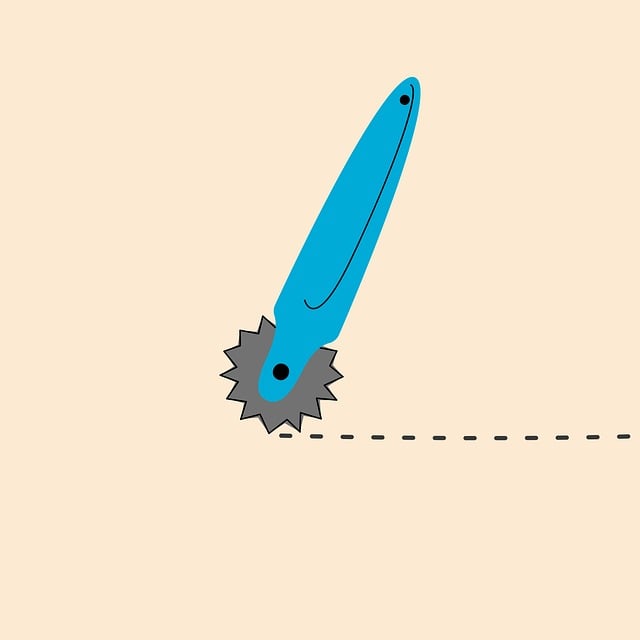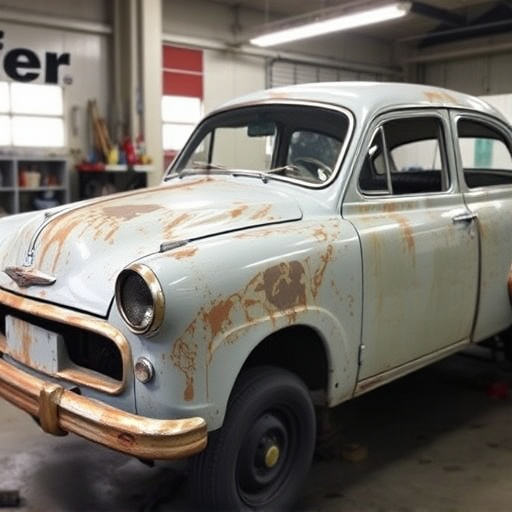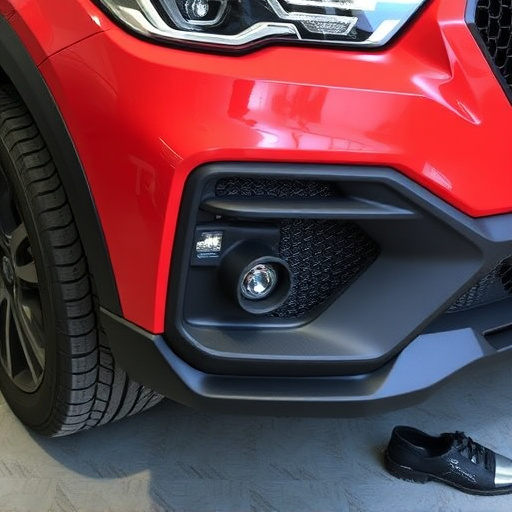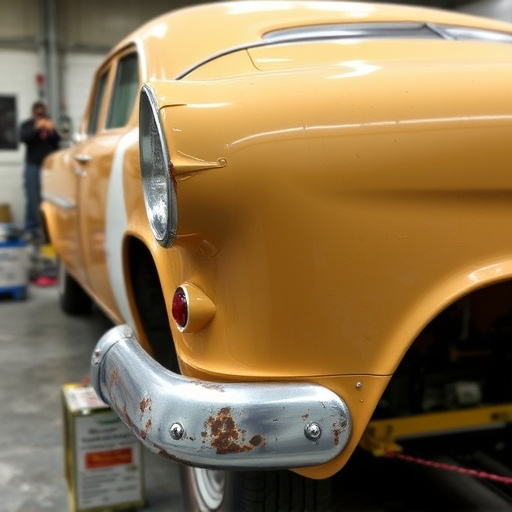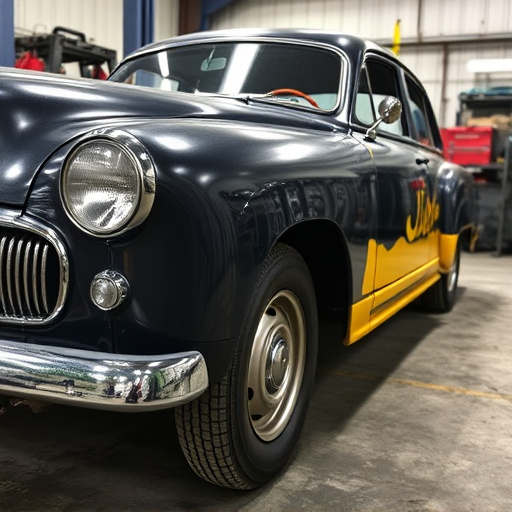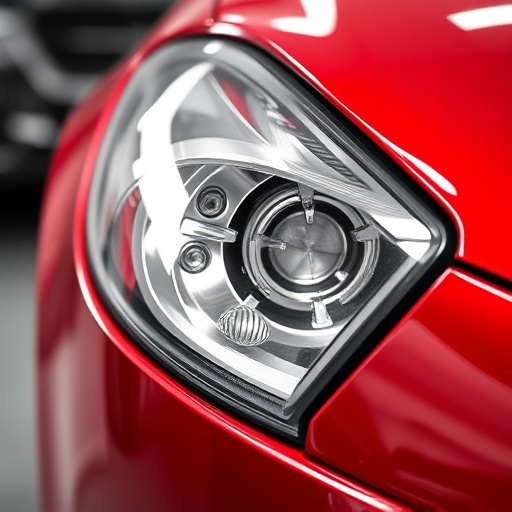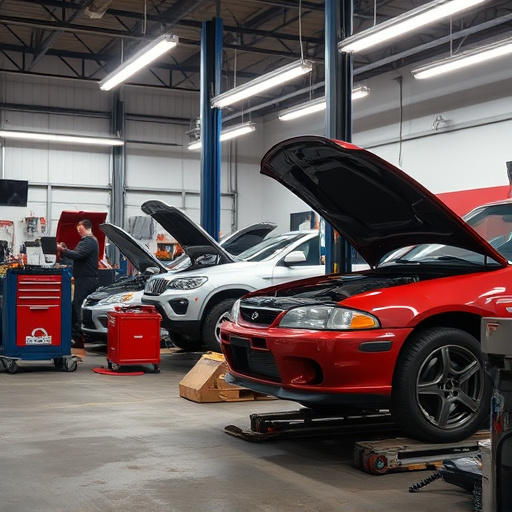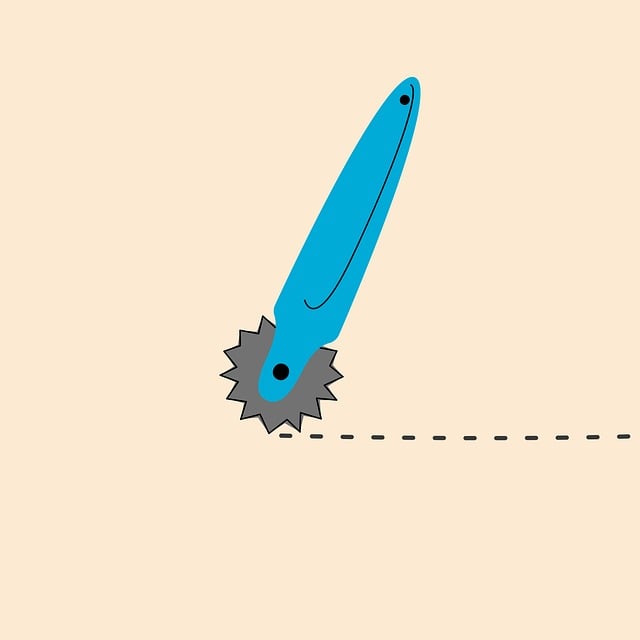Modern automotive repair focuses on advanced materials like aluminum and carbon fiber composites. Specialized techniques, such as resin injection, laser welding, and paintless dent repair (PDR), are required for damage to these materials. Carbon fiber repair methods preserve structural integrity and lightweight properties, while CAD and 3D printing technologies enable precise restoration of complex parts. Skilled technicians ensure optimal vehicle performance and safety through mastery of these advanced repair techniques.
Aluminum body components, a key element in modern automotive design, offer lightweight strength but require specialized care. This article delves into the world of aluminum and carbon fiber composite materials, exploring their unique properties and challenges. We’ll dissect common damage types—from dents to cracks—and highlight effective repair methods for both materials. Furthermore, we’ll introduce advanced techniques and technologies shaping the future of automotive repairs, including innovative tools and sustainable practices, particularly focusing on the intricate repair of carbon fiber components.
- Understanding Aluminum and Carbon Fiber Composite Materials
- Common Damage Types and Repair Methods for Body Components
- Advanced Techniques and Technologies in Modern Automotive Repairs
Understanding Aluminum and Carbon Fiber Composite Materials

Aluminum and carbon fiber composite materials are commonly used in modern automotive manufacturing, offering lightweight yet robust alternatives to traditional metal or plastic components. Understanding their unique properties is crucial for effective repair techniques in a vehicle body shop. Carbon fiber components, known for their exceptional strength-to-weight ratio and durability, require specialized care during car collision repair or automotive restoration processes.
These composite materials consist of carbon fibers woven together and infused with resins, creating a strong and lightweight structure. Unlike aluminum, which is a single metal, carbon fiber composites demand precise handling due to their complex makeup. In the event of damage, such as cracks or delaminations, experienced technicians in car collision repair shops must employ advanced techniques like resin injection, structural bonding, or even automated composite repair machines to restore these intricate components, ensuring they meet original equipment manufacturer standards for optimal vehicle performance and safety.
Common Damage Types and Repair Methods for Body Components

In the realm of automotive restoration, the reparability of body components greatly varies based on their material. Among these, aluminum body parts have gained prominence due to their lightweight nature and increasing use in modern cars, including Mercedes Benz models undergoing collision repair. Common damage types include dents, scratches, and cracks, which can range from minor aesthetics issues to structural compromises.
For aluminum, the preferred repair methods often involve specialized techniques tailored to its unique properties. While traditional welding might not be suitable for all parts, advanced processes like resistance spot welding and laser welding are employed to ensure structural integrity. In cases where damage is superficial, such as small dents or scratches on carbon fiber components, techniques like paintless dent repair (PDR) offer efficient auto repair services without compromising the original finish. This method has become increasingly popular in the industry, especially for cosmetic repairs aimed at maintaining the sleek appearance of modern automotive designs.
Advanced Techniques and Technologies in Modern Automotive Repairs
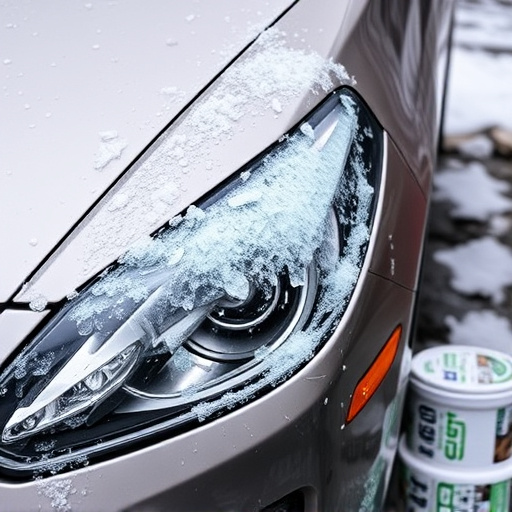
In modern automotive repairs, advanced techniques and technologies have significantly transformed the landscape of vehicle restoration, especially when dealing with intricate aluminum body components. One notable innovation is the integration of carbon fiber components, offering enhanced structural integrity and lightweight benefits compared to traditional metal parts. Carbon fiber repair techniques involve specialized tools and expertise, ensuring precise restoration while maintaining the component’s strength-to-weight ratio. This advanced approach is particularly crucial in the automotive body shop for repairing or replacing damaged panels, fenders, and other exterior structures without compromising performance.
Additionally, computer-aided design (CAD) and 3D printing technologies play a pivotal role in collision repair processes. These digital tools enable auto body repairs to create precise patterns and molds, facilitating the reproduction of original equipment manufacturer (OEM) parts with precision. This level of customization and efficiency ensures that vehicles can be restored to their pre-incident condition, showcasing the pinnacle of modern automotive repair techniques, especially for complex aluminum and carbon fiber components.
Aluminum body components repair has evolved with advanced techniques and technologies, addressing common damage types effectively. Understanding the unique properties of aluminum and carbon fiber composite materials is crucial for successful repairs. Modern automotive repairs leverage innovative methods to restore these complex materials to their original condition, ensuring both structural integrity and aesthetic appeal. By adopting these cutting-edge techniques, professionals can deliver high-quality results, enhancing the longevity and value of vehicles with aluminum and carbon fiber components.

